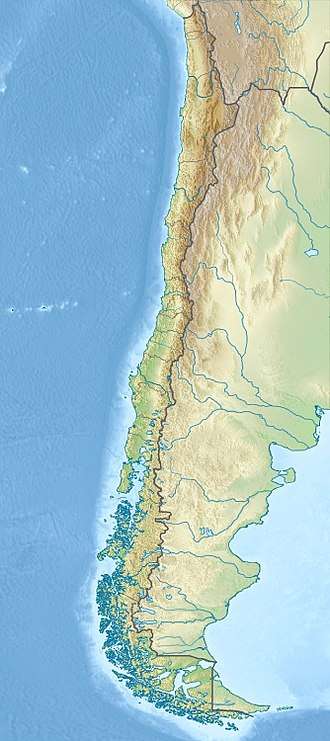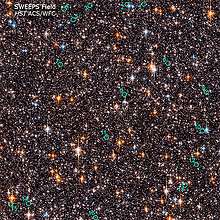SPECULOOS
| Alternative names |
SPECULOOS |
|---|---|
| Location(s) |
Chile |
| Coordinates |
24°36′56″S 70°23′25″W / 24.6156°S 70.3904°WCoordinates: 24°36′56″S 70°23′25″W / 24.6156°S 70.3904°W |
| Organization |
European Southern Observatory University of Liège |
| Telescope style |
Astronomical survey Optical telescope Ritchey–Chrétien telescope |
| Number of telescopes |
4 |
| Diameter |
1 m (3 ft 3 in) |
 Location of SPECULOOS | |
SPECULOOS (Search for habitable Planets EClipsing ULtra-cOOl Stars) is a project in development that will consist of four Ritchey-Chretien design telescopes of 1-metre primary aperture, made by ASTELCO. Each telescope will be equipped with a NTM-1000 robotic mount, that will be installed at the Paranal Observatory in Chile to search for Earth-sized exoplanets around 1000 ultra-cool stars and brown dwarfs.[1][2][3][4][5]
The system comprises four telescopes called Europa, Io, Callisto, and Ganymede. The first telescope (Europa) saw its first light in April 2017.[6] The second telescope (Io) began operations in October 2017.[7] The robotic observations of each of the four telescopes will be controlled by the program ACP Expert. There is a sister project in the northern hemisphere. [8]
Wavelength
The four 1m-diameter telescopes will be equipped with cameras sensitive in the near-infrared, the wavelength range in which ultra-cool stars and brown dwarfs emit most of their light.
Collaboration
SPECULOOS involves scientists from the University of Liège (Belgium), the Cavendish Laboratory, Cambridge (UK) and the King Abdulaziz University (Saudi Arabia), under the leadership of Michaël Gillon of the University of Liège. The European Southern Observatory (ESO) supports and hosts SPECULOOS at the Paranal Observatory.
See also
- TRAPPIST another project of the University of Liège to search for exoplanets.
References
- ↑ "Université de Liège - Life elsewhere in the Universe? A new nearby planetary system could bring soon the answer". Ulg.ac.be. 2016-07-20. Retrieved 2016-08-01.
- ↑ "Speculoos". Orca.ulg.ac.be. Retrieved 2016-08-01.
- ↑ "Astronomers revisit dwarf stars' promise : Nature News & Comment". Nature.com. 2013-10-29. Retrieved 2016-08-01.
- ↑ "SPECULOOS, a search for terrestrial planets transiting the nearest ultra-cool stars (Speaker: Michael Gillon)". Space.mit.edu. Retrieved 2016-08-01.
- ↑ "Research". SPECULOOS. Retrieved 23 February 2017.
- ↑ Europa First light!. SPECULOOS. 20/04/2017
- ↑ Io, Europa’s young brother is installed. SPECULOOS. 04/10/2017
- ↑ https://www.eso.org/public/chile/teles-instr/paranal-observatory/speculoos/

